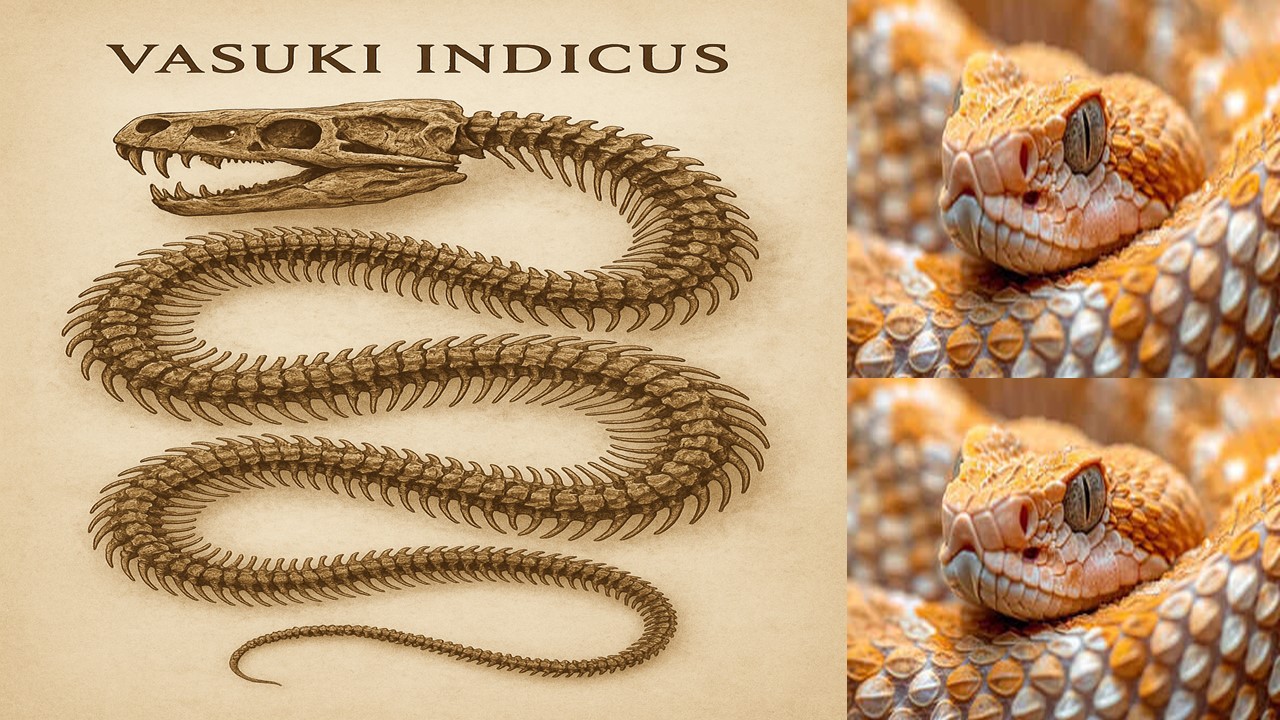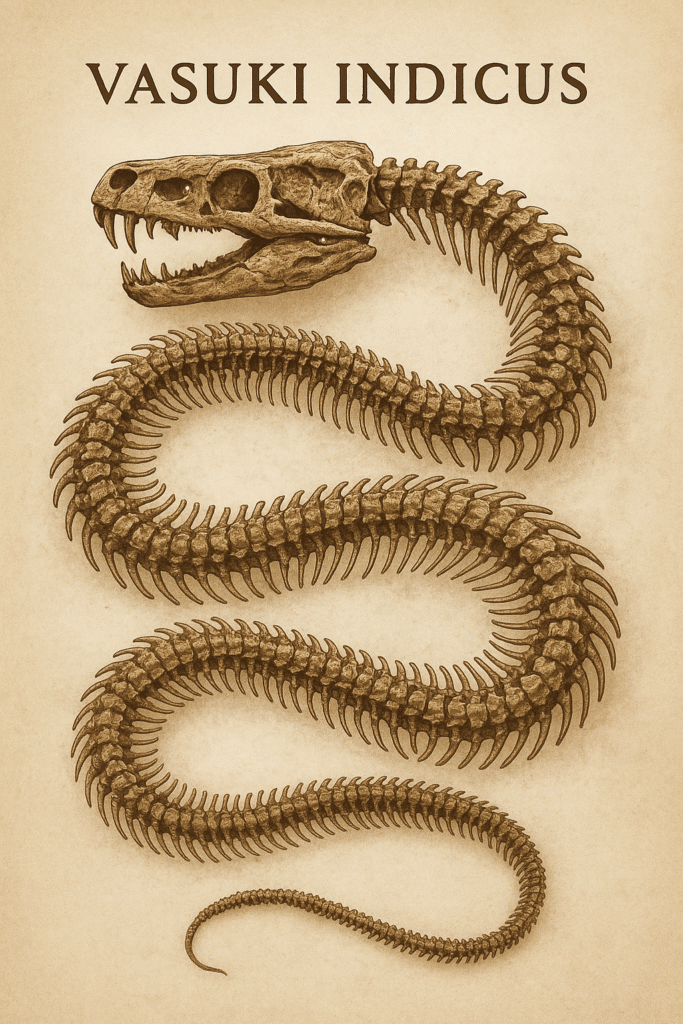
India’s 47-Million-Year-Old Snake Fossil Could Be the Biggest Ever
The massive prehistoric snake discovery currently making headlines involves a newly identified fossil species named Vasuki indicus, found in western India. It’s creating global buzz in the scientific community due to its astonishing estimated length of 50 to 60 feet, potentially making it the largest snake ever known, even longer than the legendary Titanoboa.
Key Details:
- Name: Vasuki indicus (named after the mythical serpent Vasuki in Hindu mythology)
- Era: Believed to have lived approximately 47 million years ago during the Eocene epoch.
- Location Found: Kutch region, Gujarat, India.
- Length: Estimated between 11–15 meters (36–50+ feet)
- Comparison: May exceed the size of Titanoboa, which was around 42–49 feet long and lived in what is now Colombia.
Scientific Importance:
- The snake belonged to an extinct group called Madtsoiidae, which were non-venomous constrictors.
- The vertebrae structure suggests it moved slowly and likely ambushed large prey, including reptiles and small mammals.
- This discovery sheds light on snake evolution, biogeography, and how ancient Indian ecosystems supported massive reptiles.
🌏 Global Significance:
- Reinforces the idea that India was home to giant reptiles during its period as an isolated landmass.
- The fossil adds to the growing body of evidence that prehistoric India was a biodiversity hotspot.
- Scientists say Vasuki indicus offers crucial data on ancient global climates and predator-prey dynamics.
Here’s a detailed breakdown of the story behind India’s 47-million-year-old snake fossil, Vasuki indicus, which could be the largest snake ever discovered:

Discovery Overview
- Species Name: Vasuki indicus
- Age: Approximately 47 million years old (Eocene Epoch)
- Location Found: Panandhro Lignite Mine, Kutch, Gujarat, India
- Named After: Vasuki, the mythical serpent wrapped around Lord Shiva’s neck in Hindu mythology.
Record-Breaking Size
- Estimated Length: Between 36 to 50+ feet (11–15 meters)
- Comparison:
- Titanoboa, the previous record-holder, reached ~42–49 feet.
- Vasuki indicus may exceed Titanoboa in size, depending on interpretation of the fossil vertebrae.
Scientific Significance
- Family: Extinct Madtsoiidae – large, non-venomous constrictors
- Physical Traits:
- Thick-bodied, slow-moving
- Likely ambushed large prey
- Possibly lived in tropical forests or swampy environments
- Importance:
- Provides rare insight into snake evolution during India’s period as an isolated landmass
- Helps understand continental drift and ancient climate conditions
Geological Context
- India was drifting northward after breaking from Madagascar and had not yet collided with Asia.
- The fossil beds of the Panandhro mine are part of a rich lignite deposit known for yielding vertebrate fossils.
Viral Reaction & Media Attention
- News of the discovery has gone viral, drawing attention from major scientific outlets and social media.
- Paleontologists call this a landmark find, especially in the context of India’s underrepresented fossil record.
Expert Quotes
“This snake was likely an apex predator of its time,” says Dr. Debajit Datta of IISER, Kolkata.
“Its discovery rewrites what we know about the size limits of ancient snakes.”What is Vasuki indicus?
Vasuki indicus is the name given to a giant prehistoric snake fossil discovered in Gujarat, India. It’s believed to be one of the largest snakes to have ever lived, possibly exceeding the size of Titanoboa.
Where was it discovered?
It was found in the Panandhro Lignite Mine in the Kutch region of Gujarat, known for rich fossil deposits
How old is the fossil?
The fossil is estimated to be 47 million years old, dating back to the Eocene Epoch.
How big was the snake?
Scientists estimate the snake was between 36 and 50+ feet (11 to 15 meters) long—making it a strong contender for the longest snake ever discovered.
What kind of snake was it?
Vasuki indicus belonged to the Madtsoiidae family, an extinct group of non-venomous, constricting snakes that were ambush predators.
What did it eat?
It likely preyed on small mammals, reptiles, and perhaps juvenile crocodiles, using its massive body to constrict and kill.



